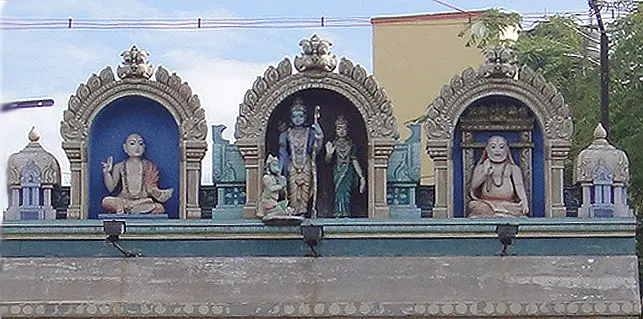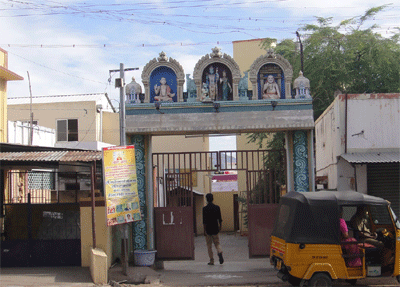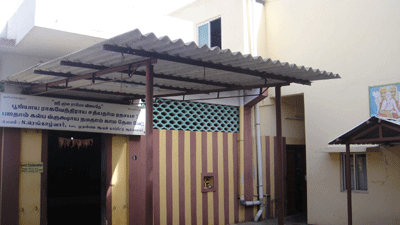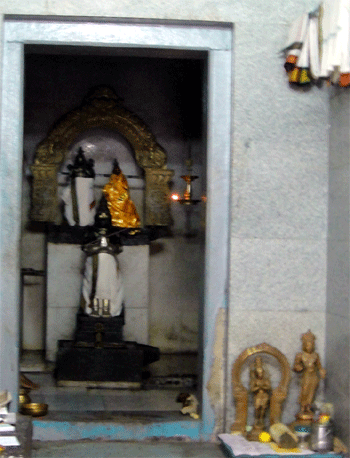
Coimbatore
Coimbatore is known as Manchester of South India. The city is the third largest city of Tamil Nadu after Chennai and Madurai. The origin of this place is even before the 2nd century AD. As it was a practice to build a city on the banks of a river, this city was also developed on the banks of river Noyyal. This place was under the rule of many dynasties like the Rashtrakutas, Chalukyas, Pandyas, Hoysalas, and Vijayanagara Rayas.
There are many theories about how this place got the name ‘Coimbatore’. The tribe of Kosar has been living here since the ‘Sangam’ period. Kovai Vadavalli was headed by the Konan tribal head. He had two daughters named Konni and Muddah. This place was gifted to his daughters, hence KonniMuthur – Konamuthur – Coimbatore.
Coimbatore ruled by Vijayanagara Rayas
Coimbatore was then under the rule of the Madurai Sultanate. Vijayanagar emperor Bukka-I through Devayi had a son Kumara Kampana, also known as Kampana Udaiyar. Kumara Kampana was trained by his father in warfare and was serving as an army officer in the Vijayanagar Empire.
Kampana udaiyar successfully defeated Thondai mandalam chief Champurayan alias Sambhuvarayan. Subsequently, he established the rule of the Vijayanagar empire with Kanchipuram as headquarters. In 1378, Kumara Kampana led a successful invasion of the Madurai Sultanate and defeated the last sultan, Ala-ud-Din Sikandar Shah. Thus the territories ruled by the Madurai Sultanate came under the Vijayanagar Empire including Coimbatore.
Then during the 18th century, Coimbatore was under the Mysore rulers and also the British. With three Anglo-Mysore wars, Coimbatore saw a large number of ups and downs. Mysore troops and British Troops fought to take control of the strategically located Coimbatore. Finally, in 1799 Coimbatore came under the control of Britishers.
During this period under the influence of Rayas and Mysore rulers, both of whom were ardent devotees of Sri Hanuman, Coimbatore also had a large number of devotees for Lord Sri Hanuman.
Vijayanagara Rayas and Hanuman worship
 The Vijayanagara Empire was founded in the year 1336 by Harihara I and his brother Bukka Raya I on the advice of Sri Sankaracharya of Sringeri, an Advaita philosopher. Subsequently, the rulers of this dynasty supported Jainism and dwaitha philosophy. Sri Hanuman was considered a deity who could bestow wisdom, strength, and courage. At this point, worship of Lord Sri Hanuman worship had become a necessity. Thus wherever the representatives of the Vijayanagar Empire were ruling, there the worship of Sri Hanuman was observed. Mysore was also ruled by Rayas, thus in Kongu Nadu and Mysore, worship of Sri Hanuman had come to fore.
The Vijayanagara Empire was founded in the year 1336 by Harihara I and his brother Bukka Raya I on the advice of Sri Sankaracharya of Sringeri, an Advaita philosopher. Subsequently, the rulers of this dynasty supported Jainism and dwaitha philosophy. Sri Hanuman was considered a deity who could bestow wisdom, strength, and courage. At this point, worship of Lord Sri Hanuman worship had become a necessity. Thus wherever the representatives of the Vijayanagar Empire were ruling, there the worship of Sri Hanuman was observed. Mysore was also ruled by Rayas, thus in Kongu Nadu and Mysore, worship of Sri Hanuman had come to fore.
Coimbatore and temples for Sri Hanuman
Coimbatore was under the influence of the Vijayanagara Empire either through Madurai Rayas or Mysore rulers. Thus, Sri Hanuman worship had been in practice in vogue since the 15th Century. There are many Hanuman Temples in and around Coimbatore city itself. Later these temples got affiliated to some of the Mutts belonging to the Madwa cult. Today these Sri Anjaneya temples are more popularly known by the name of the mutt.
Sri Anjaneya Swamy temple at Periyanaicken Palayam
Periyanaicken Pallayam is twenty kilometers away from Coimbatore on the way to Mettupalayam. There are a few old temples in Periyanaicken Pallayam. One among them is a temple for Sri Hanuman. As one comes from Coimbatore to Periyanaicken Pallayam, there is a road on the right which leads to the main police station, sub-post office, and sub-registrar office. The Anjaneya Temple is located on this road on the left-hand side.
Legend of the Temple
 The temple was in a house-like building without any cupola, tower, or arch. This temple of Sri Hanuman was popular among the large number of locals, who visit it regularly. This temple had been mapped by the British around 1850. Therefore it goes without saying that this temple is older by around two hundred years.
The temple was in a house-like building without any cupola, tower, or arch. This temple of Sri Hanuman was popular among the large number of locals, who visit it regularly. This temple had been mapped by the British around 1850. Therefore it goes without saying that this temple is older by around two hundred years.
There is no record to show how this temple was maintained, but with the help of locals the poojas were held but no special poojas were held. When the will of Sri Anjaneya prevails then things start moving on their own.
During the 60s, only a very few used to visit this temple as there was no lighting inside. The temple building was covered with grasses and bushes. One person by the name Sri Chikkoose Achar along with his daughter used to go to the village people to procure rice and some money to make naivedyam for the deity and light the deepa daily. After daily pooja, he used to cook for himself and eat only at around 3 pm.
In the early 70s, a bunch of locals formed an association and named it ‘Sri Maruthi Seva Sanga’. With generous contribution from the public, the leaking roof was changed and the pucca roof was constructed. The Sanjivini Anjanaya Idol also was in a broken condition. The Original damaged Sanjivi Anjaneya vigraha was replaced with a Dasa Anjanaya vigraha. The kumbabhisheka was performed in July 1977. The renewed temple had attracted more devotees from nearby places. There were Bajans every Thursday and recitation of Sri Vishnu Sahasranama every Saturday which inculcated more vigor in the devotees.
The temple was in a house-like building without any cupola, tower, or arch. This temple of Sri Hanuman was popular among the large number of locals, who visit it regularly. This temple had been mapped by the British around 1850. Therefore it goes without saying that this temple is older by around two hundred years.
Cupola [Vimanam] for Sri Anjaneya was constructed with kumbam. With the blessing of elders and the Acharyas, Mruthiga Brindavan of Sri Raghavendra Swamy was installed in 1984. Kumbabhisheka was performed. Subsequently, Sri Sita Rama was installed in 1997 in Sri Anjaneya sannidhi, in an elevated platform behind Sri Anjanaya moortham.
Pontiffs from Sri Rayar Mutt, Sri Pejavar Mutt, Sri Vysaraya Mutt, Sri Palimar Mutt, Sri Kaniyur Mutt, and Bandarikare Mutt visited this shrine of Lord Hanuman.
Temple today:
 With the blessing of elders, and the vigorous participation of devotees of Sri Anjaneya today this premises has a new Anna Dhana Mandap on the first floor, a new bore well, an archway at the main road leading to the temple, etc.
With the blessing of elders, and the vigorous participation of devotees of Sri Anjaneya today this premises has a new Anna Dhana Mandap on the first floor, a new bore well, an archway at the main road leading to the temple, etc.
Sri Anjaneya Special poojas of this temple
Every Thursday Bajans, every Saturday recitation of Sri Vishnu Sahasranama, and every second Sunday, Sri Sathyanarayana Pooja are performed regularly. Sri Rayar Ratha Utsava is performed at 7 pm on every Thursday. Kanakabhisheka is performed on the devotee’s request.
During Yughadhi, Sri Rama Navami, Seetha Kalyanam, Sri Hanumath Jayanthi, Sri Madwa Navami, Sri Madwa Jayanthi, Sri Vyasa Rayar Aradhana special poojas are performed as a mark of celebration.
Sri Raghavendra Swamy Aradhana is conducted for four days.
Sri Anjaneya
Sri Anjaneya Swamy of this kshetra is in a standing position and the moortham is about three feet in height. Behind Him, SriRama and Mata Sri Sita Devi are placed on a raised platform. There is ‘Tiruvachi’ for these two.
Sri Anjaneya Swamy is east-facing and standing with His hands folded. He is wearing ornaments on His shoulders known as ‘bhuja badhana’, ‘keyur’ on his arms, and kankan on His wrist and all these add beauty to the folded hands. Lord is wearing an ornament close to his neck and also three malas, one of which has a pendent in His bosom. His lotus feet are adored an hollow anklets and the Lord’s tail with a curve at the end rests near His lotus feet. Lord is wearing an earring that is long and touching the shoulder. A small crown on His head adds beauty to the deity. The straight-looking eyes of the Lord are full of compassion.
Location of the temple: "Sri Anjaneya temple :: Periyanaicken Palayam :: Coimbatore"
Experience
Destroyer of evil and a protector of trust, the Lord of the kshetra had risen from nowhere just to bestow blessings on the trusted. Let us come and pray at this kshetra and take His blessings in abundance.
SRI HANUMAN THINKS DIFFERENTLY, THINKS FAST
THINKS AHEAD AND ACTS FOR SURE
Ed [September 2017]
Updates: [Jan 2025]
